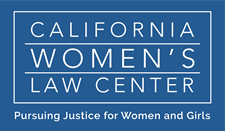Women face discrimination throughout the course of their lives. And, in the wake of the pandemic, several recent studies have illustrated how the impacts of gender inequity have been amplified during COVID-19.
According to the Center for American Progress, women face higher rates of poverty than men. While this is true across all races and ethnicities, women of color are disproportionately impacted: non-white women are 40% of the population, but 60% of those living in poverty. LGBTQ women are more likely to experience poverty than cisgender women, and disabled women face wide disparities compared with their non-disabled counterparts.
Inequality starts early and grows over the course of a woman’s life. The economic gap is especially wide during women’s childbearing years, when women often need to take time away from the workforce, or accept reduced hours and wages. Nearly one in four unmarried mothers with children live in poverty. The impacts of the wage gap, sexual assault and harassment, and other forms of discrimination compound over time with large wealth disparities experienced by women 75 and older. Two-thirds of adults living in poverty over age 65 are women.
As people across the country struggle with the economic fallout of the COVID-19 crisis, women—especially women of color—are shouldering the biggest burdens. In a national survey by TIME’S UP, approximately half of Latina and Black women respondents reported that they do not have enough money to pay for basic necessities like food and housing.
In advance of the Black Women’s Equal Pay Day, recognized this year on August 13th, National Women’s Law Center (NWCL) released a fact sheet that outlines the specific ways in which Black women have been economically harmed by the pandemic. Black families already have less wealth on average than white families, rendering them less able to weather the loss of a job. One in seven Black women was unemployed in June, and the jobs many women of color have returned to are tenuous because they include the hospitality and retail sectors which may need to shut down again to comply with future emergency orders.
These factors have long-term implications and add to American women’s economic insecurity. NWLC points out that during the Great Recession, white men’s unemployment rate never reached double digits, but Black women’s unemployment remained over 10% for 5 years. If the same pattern applies in 2020, women and people of color will experience greater challenges recovering from this crisis.
Closing the economic gap for all women will require a multi-pronged approach that addresses both gender and racial equity, as well fairness for LGBTQ people and women with disabilities. Expanding protections and benefits for low-wage workers, allowing paid caregiving leave, and closing the gender wage gap are just a few of the solutions to advancing women’s economic equality.
To learn more about advancing pay equity for Black women, please join the First Partner of California and the California Commission on the Status of Women for an online discussion on August 13th, at 3pm. Click here or click the flyer below to register.
